This article doesn’t list every traffic strategy; it only lists the ones that are proven to work.
Let’s get to it.
My post on SEO statistics has generated consistent search traffic since it was published:

If you can rank high on Google, you can see the same results too. However, you can’t just target any random topic—you need to write about topics people are searching for.
Here’s how to find them:
- Go to Ahrefs’ Keywords Explorer
- Enter a relevant keyword
- Go to the Matching terms report
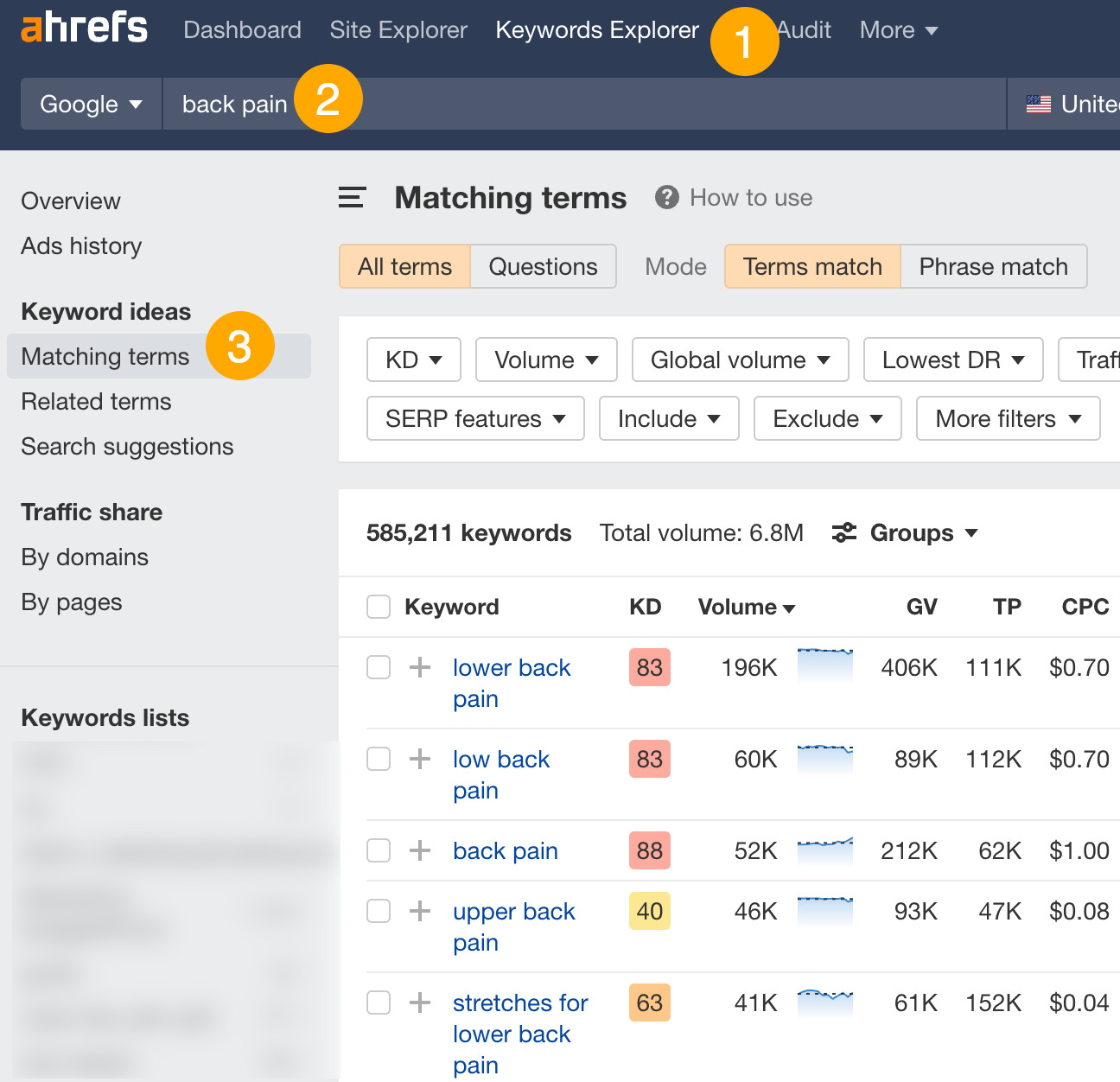
Many of the keywords you see will be super competitive. So we’ll use the “Keyword Difficulty (KD)” filter to narrow the results down to those that are easy to rank for.

Eyeball the results and pick out those that are relevant to your site.
From new ones to a top 100 business podcast, our chief marketing officer, Tim Soulo, has appeared on them all.
The easiest way to find podcasts to appear on is to Google them.

Look through the results and pick out those that are relevant. Then find the host’s email and pitch yourself as a guest.
If you find a prolific podcast guest along the way, you can enter their site into Ahrefs’ Site Explorer and find all the podcasts they’ve been on by going to the Backlinks report and filtering for results with “episode” in the referring page title.
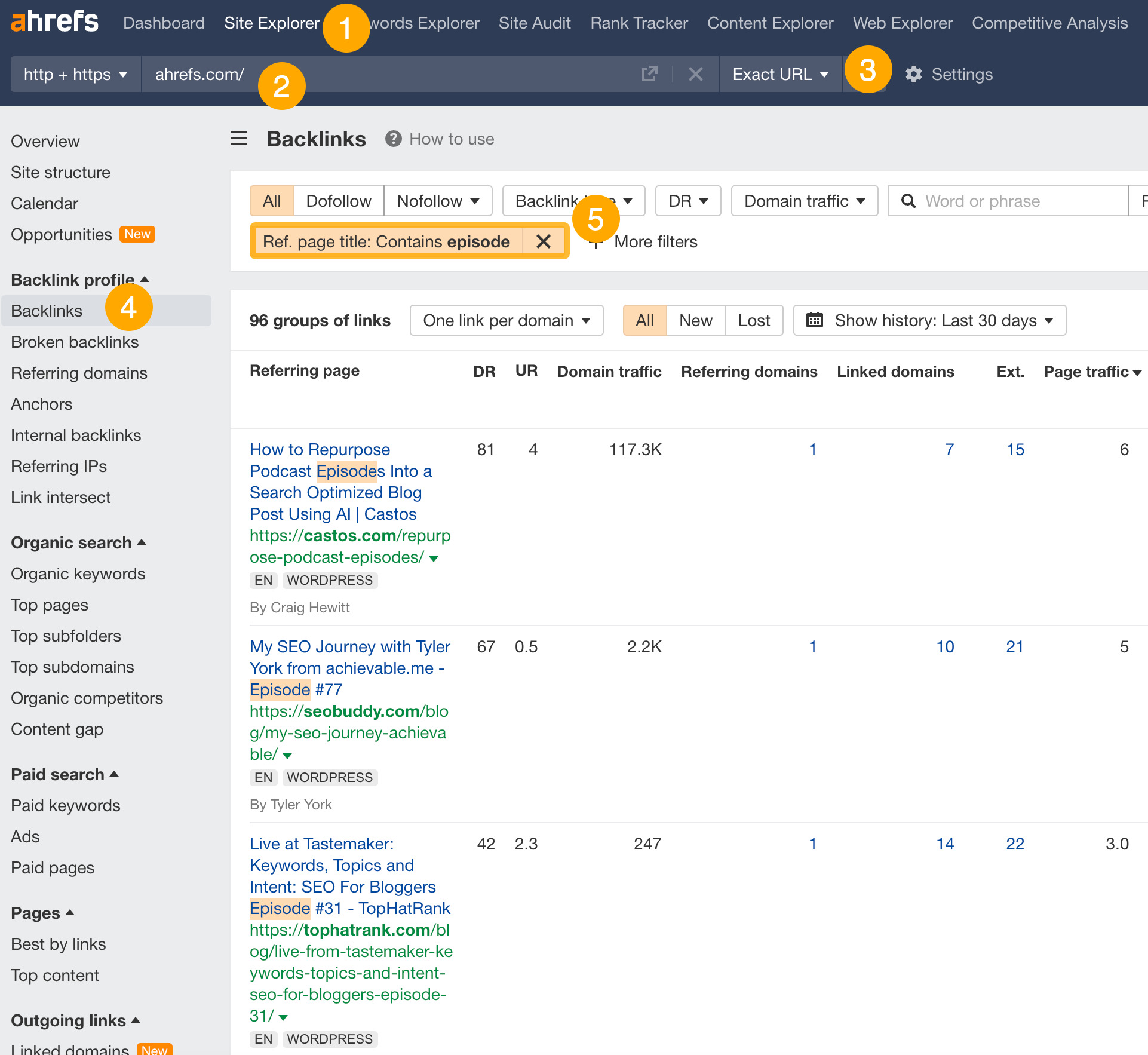
If the top-ranking pages cover similar subtopics, they’re likely important and what searchers expect to see. So if your content is “missing” them, that can be a reason why you’re not ranking as high.
To find these subtopics, we can look at the common keywords the top-ranking pages rank for that we don’t.
Here’s how to find these “content gaps”:
- Enter your target keyword into Ahrefs’ Keywords Explorer
- Scroll to the SERP overview
- Check up to three relevant competing pages
- Click Copy

Then, navigate to our Competitive Analysis tool and go to the Content Gap report. Add your existing page to the “Target” section and the three URLs into the “Competitors” section. Hit “Compare.”
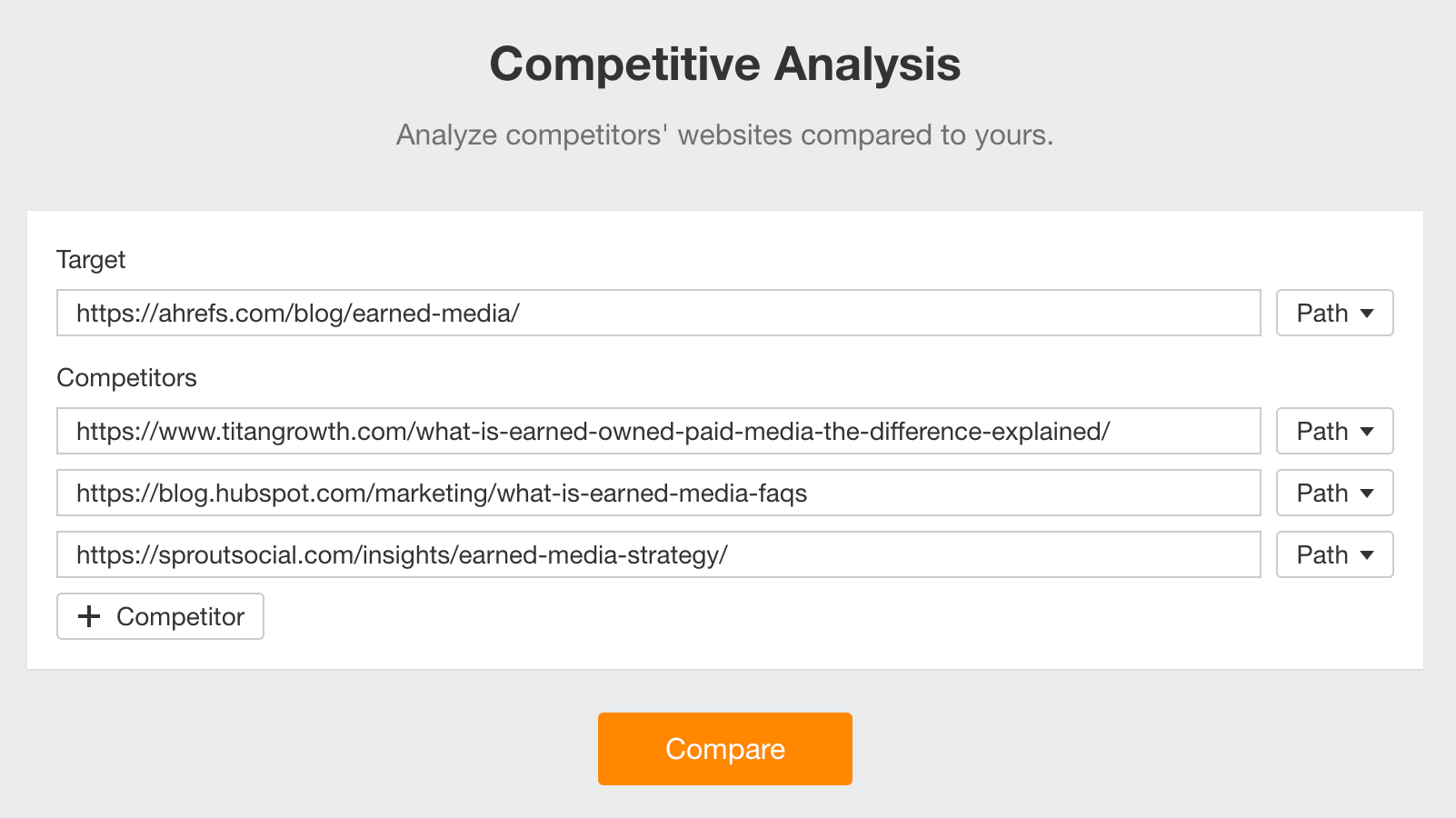
This opens up the Content Gap report, where we can see the common keyword rankings among these pages. Look through the report and see if there are any subtopics you can cover. For example, if we wanted to update our post on earned media, these could make good H2s:
- “owned media examples”
- “paid media examples”
- “earned media vs paid media”
- “owned vs earned media”

With >330 million monthly active users, it seems a no-brainer to promote on Reddit. Except that Reddit hates marketing.
If Redditors catch even a whiff of self-promotion, they will downvote you, delete your post, or ban you from the subreddit.
Yet, Tim managed to successfully “promote” his keyword research post:
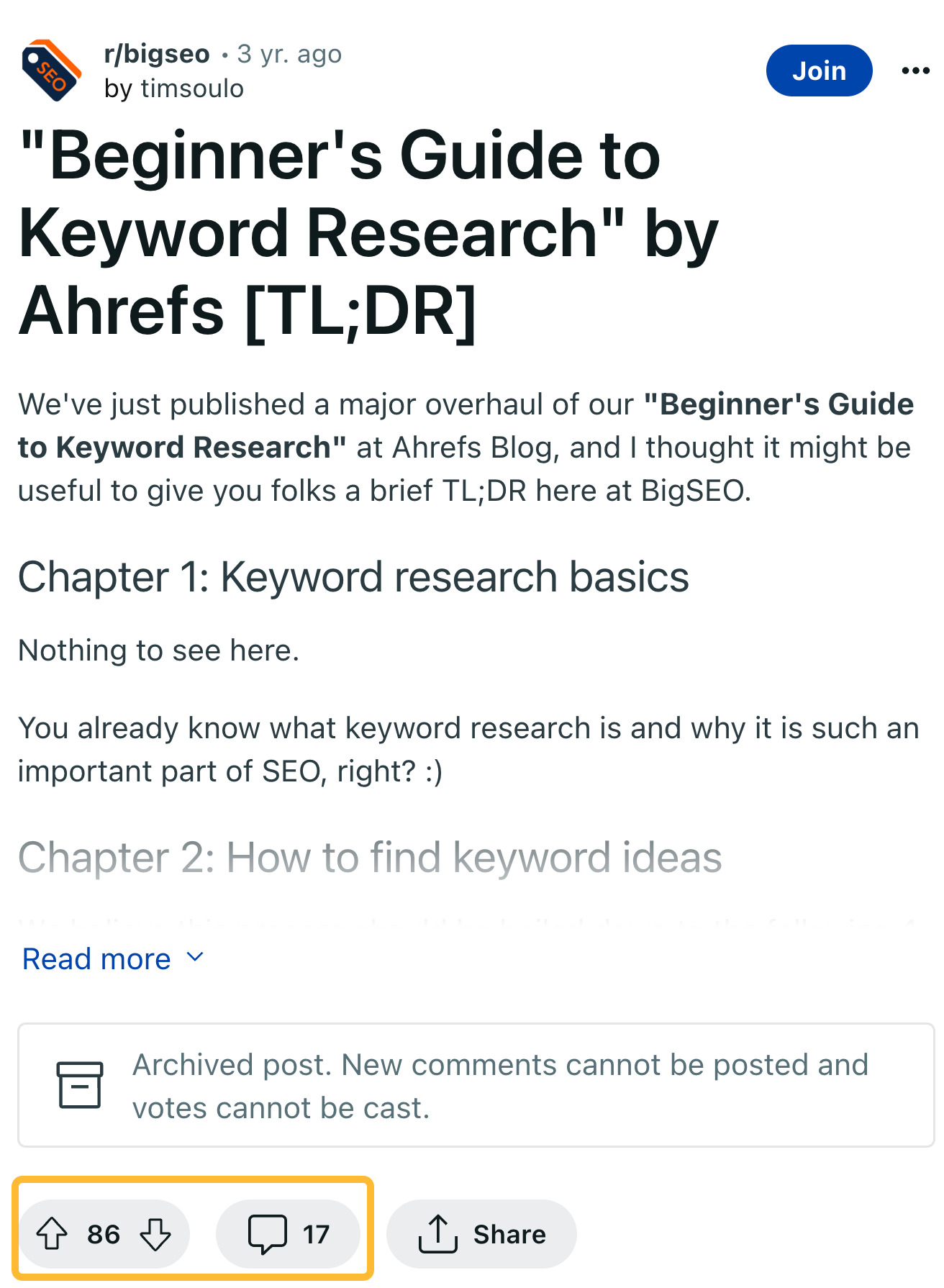
Reddit enjoys helpful content. Its users are only antagonistic to spammers. So if you want to promote on Reddit, replicate what Tim did.
Take your best content, strip away all internal and external links, and share it to a relevant subreddit. Leave just one link back to your original blog post at the end. Make sure the post is valuable on its own, whether or not people clicked through the link.
Buffer is a social media scheduling tool. It was a non-competitor and targeted the same audience. So we did a joint webinar titled “How to Build Your Website Traffic With Evergreen Content and Social Media.”
Both brands heavily promoted the webinar on social media leading up to day zero. Post-webinar, Buffer created a blog post summarizing the presentation, while we posted the recording on YouTube and uploaded the presentation slides on SlideShare.
Look for opportunities to partner with brands that solve different problems for a similar audience. That way, you can each gain access to an entirely new user base.
I updated my post on free SEO tools, and traffic shot up:

SEO is not a “set it and forget it” thing. Even if you’re ranking well for your target keyword, competitors may steal your spot or Google may lower your rankings when your content becomes outdated.
So you need to keep it up to date to maintain your rankings.
The easiest way to find out which content to refresh is to install our free WordPress SEO plugin and run an audit. The audit will tell you which articles you should be updating.

Look at the top-ranking results and compare them to yours to see what aspects need to be refreshed.
Sometimes, it can be as simple as filling content gaps and updating old parts like screenshots. Other times, search intent could have changed—in that case, you might need to do a full rewrite.
Amplifiers are people with a large audience. They have the ability to share your content with their audience and send tons of traffic to your site.
The easiest way to find amplifiers in your niche is to use SparkToro. Simply enter your topic or niche:

However, just because you’ve found them doesn’t mean you can send them an email and expect them to promote your website. They’re not obliged to do that.
Your goal is to befriend them and build up the relationship. Start by featuring them or their work in your content. Then, reach out and let them know. They’ll be delighted.

In this example, Amanda Natividad graciously promised to share it in her newsletter. But don’t expect it. Treat it as a bonus—if they share it, that’s great. If they don’t, it’s cool too.
Focus on building the relationship, not trading one-off favors.
Our head of content, Joshua Hardwick, turned his post on AI content into an X (formerly Twitter) thread and got over 40,000 views:
He barely even tweets!
The best thing: You don’t have to start from scratch. Take one of your blog posts, paste it into Typefully, and add your blog post at the end of the thread:

Don’t publish immediately. You’ll want to make sure it grabs attention. So edit according to these principles:
People usually have tons of related questions when researching a topic. You’ll likely answer most of them. But sometimes, there are a few that are difficult to weave naturally into your content.
You can solve this by adding an FAQ section at the end of your article. That can potentially help your content rank for more long-tail keywords and get more search traffic.
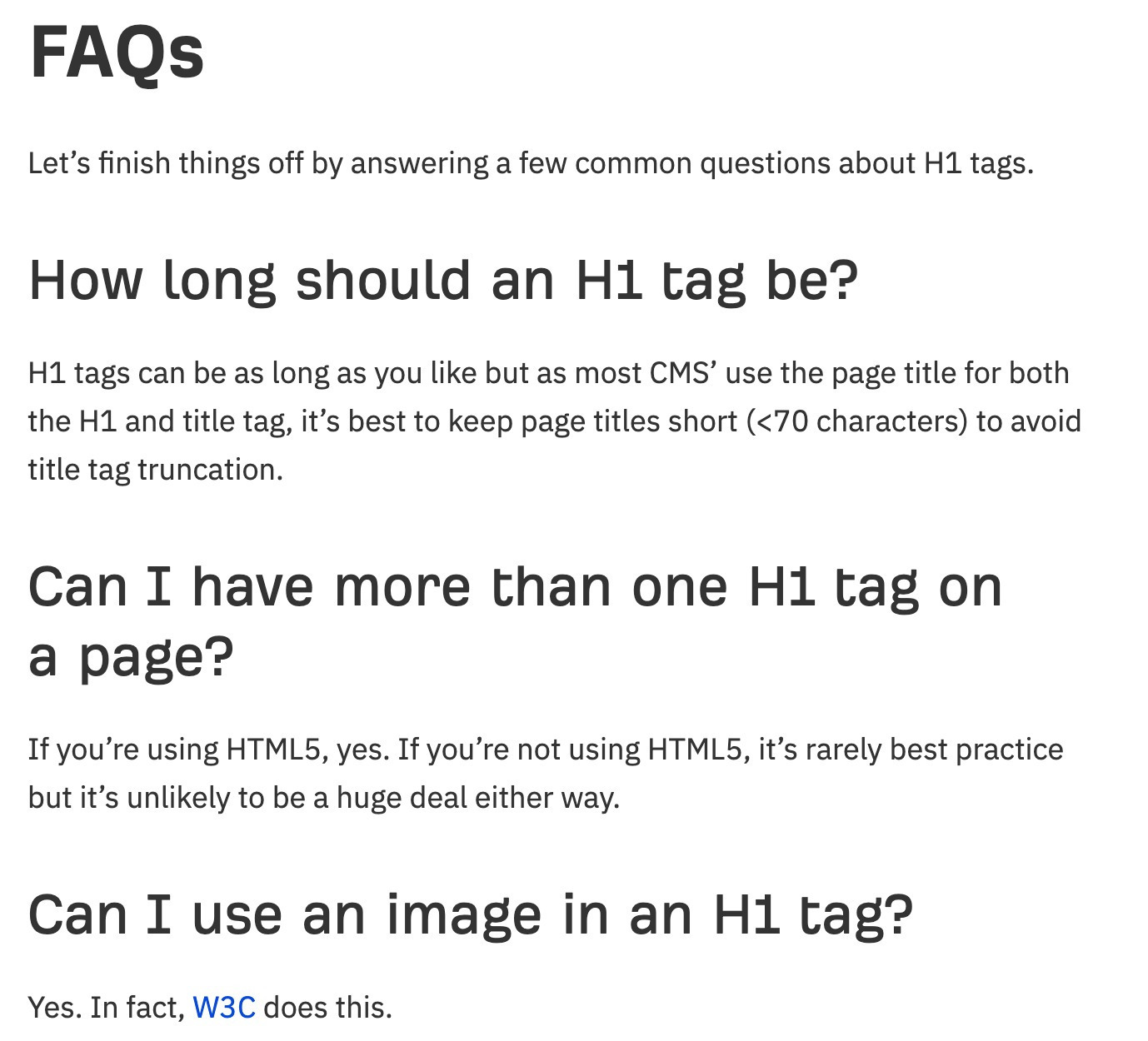
For example, one of the questions we answered in our guide to H1 tags helped us rank for a long-tail keyword:

Here’s how to find frequently asked questions to answer:
- Go to Ahrefs’ Keywords Explorer
- Enter your topic
- Go to the Matching terms report
- Toggle to “Questions”

Our LinkedIn posts generate tons of impressions and engagement:
The “social network for professionals” is not the sexiest social platform. But don’t sleep on it—many people are rediscovering LinkedIn’s ability to send tons of traffic.
I previously asked marketing consultant David Fallarme about how to excel on LinkedIn. This was what he said:
Your first job: to find and add people who are relevant to you and your target audience. Add a few influencers in your niche, then use the “People also viewed” function to see who else LinkedIn suggests. These are typically people who post regularly, which means you’ll be exposed to a lot of content in your niche.
After following ~10 - 15 influencers, you should build your LinkedIn writing muscle by commenting on their posts whenever you log on. This does a couple of things: first, it trains your brain that posting on LinkedIn is nothing to be scared of. Two, it gives you new ideas for your own content—every comment you leave is the seed for future posts. Third, when you leave thoughtful comments, and when you reply to others who have left comments, others who also follow that person will visit your profile and respond to your connection requests.
All of these increase the chances that when you post something on LinkedIn, it’s relevant to your target audience and you’re not just yelling into the void. You always have new connections who are exposed to your content.
With over 1 billion users, it’s a foregone conclusion that you need to be on TikTok, right? But most businesses haven’t, because they think it’s a platform for silly dance videos catering to Gen Z.
That’s what most people thought about YouTube in the early days too… and look at where we are now.
The key to TikTok is consistency. Here’s what marketer and author Nat Eliason suggests:
I think you should aim for two or more videos per day for the first few weeks until you get some hits.
That’s a lot of videos to make, so you’ll need to generate tons of ideas. Follow Nat’s guide to learn how:
At Ahrefs, we offer plenty of free SEO tools.
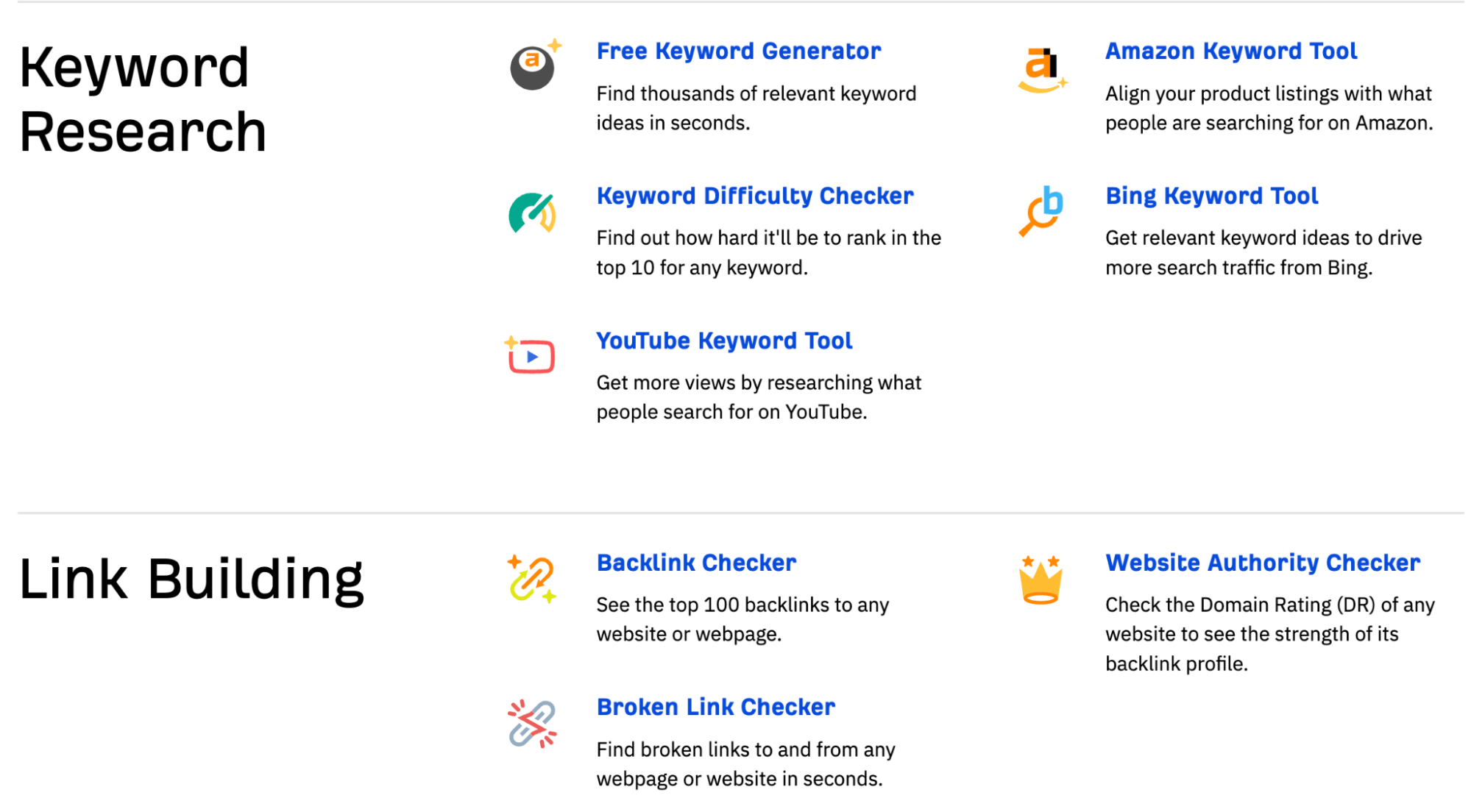
Combined, they generate an estimated 909,000 monthly search visits.
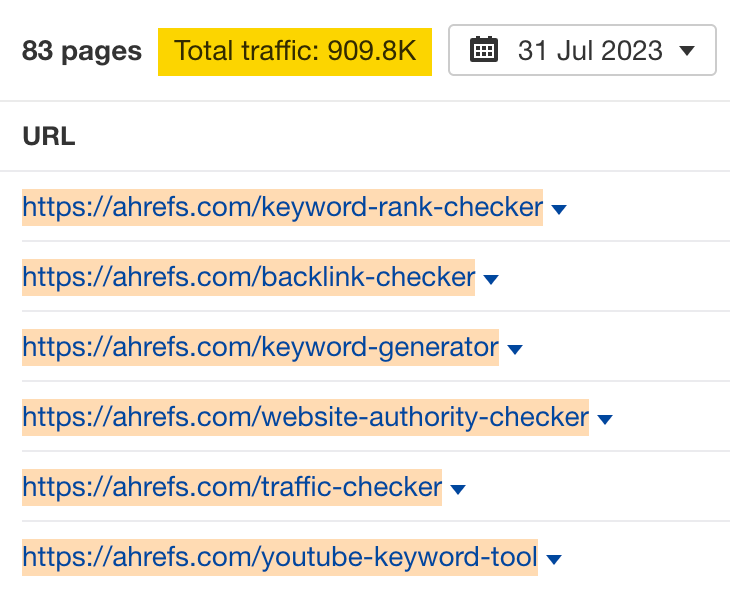
As you can see, free tools can send a lot of traffic. But you have to make sure you’re creating tools that have search demand.
Here’s how to find such opportunities:
- Go to Ahrefs’ Keywords Explorer
- Enter a relevant keyword
- Go to the Matching terms report
- In the “Include” box, search for terms like “tool, tools, calculator, checker, template, report”

Look through the list and find a relevant free tool you can create. For example, if I were an auto dealer, I could create a “car payment calculator” to help potential customers decide if they could afford a car.
Don’t waste your content. Each piece you create can be reposted or repurposed on another channel. For example, we turned our video on ChatGPT for SEO into a blog post:


There are many ways you could do this. For example, you could turn:
- Blog posts -> Reddit posts
- Blog posts -> X threads
- X threads -> LinkedIn posts
- TikTok videos -> YouTube Shorts and IG Reels
- TikTok videos -> X and LinkedIn posts
And more.
Internal links can pass PageRank, which can help boost a page’s rankings.
Here’s how to find internal link opportunities on your website with a free Ahrefs Webmaster Tools (AWT) account:
- Run a crawl with Site Audit
- Go to the Internal link opportunities report
- Search for the URL of the page you want to boost
- Choose “Target page” from the dropdown

You’ll see a list of internal linking opportunities. For example, here’s a suggestion to link to our post on faceted navigation from our one on duplicate content:

Product Hunt (PH) is Reddit for product launches. Many household names like Zapier, Slack, and Notion got their start there. It’s not just for singular products either. If you have new tools, features, or even “content products” (e.g., a course), you can launch on Product Hunt.
For example, we’ve been around since 2011. But in 2020, we launched Ahrefs Webmaster Tools and promoted it on Product Hunt:

Success on Product Hunt is not “submit and pray.” The most important factor is the work you do before launching, specifically building a following of people who would advocate for your product.
This is where building a social following is useful. No matter X/Twitter (#8), LinkedIn (#10), or TikTok (#11), your following can help boost your PH launch. You can also build social capital by participating in startup communities like Indie Hackers.
For more tips on succeeding on PH, read the guide below.
Recently, my article on content promotion was featured in SparkToro’s Audience Research newsletter:

With over 40,000 subscribers, that’s plenty of eyeballs. You’ll want to be featured on similar newsletters in your niche too.
The easiest way to find these newsletters is to look them up on a newsletter platform like Paved or Reletter.

In my example, I was featured organically. But you can reach out to these newsletters and actively introduce your content to them.
Remember: Don’t be pushy, and don’t promote every article. It’s always about the relationship with the creator, so it’s fine to not be included this time round. There are always plenty more opportunities in the future, since newsletters are sent frequently.
If you’re serving customers locally, you’ll want to rank for local search queries, especially the “map pack” search results.

To rank for the “map pack,” you’ll need to claim and optimize your Google Business Profile (GBP). Once claimed, the information you add to your business profile can show up in Google’s web search results and in Google Maps.
Learn how to optimize your GBP by following the guide below.
Every Thursday, we send a newsletter with the web’s best content (including ours):

Email may be old, but it’s still the most reliable communication medium. Every social platform can limit or ban you, but your email list is yours. Nobody can take that away from you.
To send a weekly newsletter, you need to build an email list. Put opt-in boxes in the right places, such as the sidebar and end of blog posts, and offer something in return for subscribing.
We keep it simple at Ahrefs by telling potential subscribers they can get the week’s best content:

But you can offer a carrot too. PDFs, white papers, free courses—they all work.
Sam Oh is our YouTube master. He built our channel to 425,000 subscribers in the SEO niche, a notoriously boring industry.

How did he do it? He did it by ranking our videos for important keywords on YouTube:

To rank high on YouTube, you need to target topics people are searching for. You can do this by installing the VidIQ Chrome Extension. Once installed, you’ll be able to see relevant data and keyword opportunities in your YouTube sidebar:
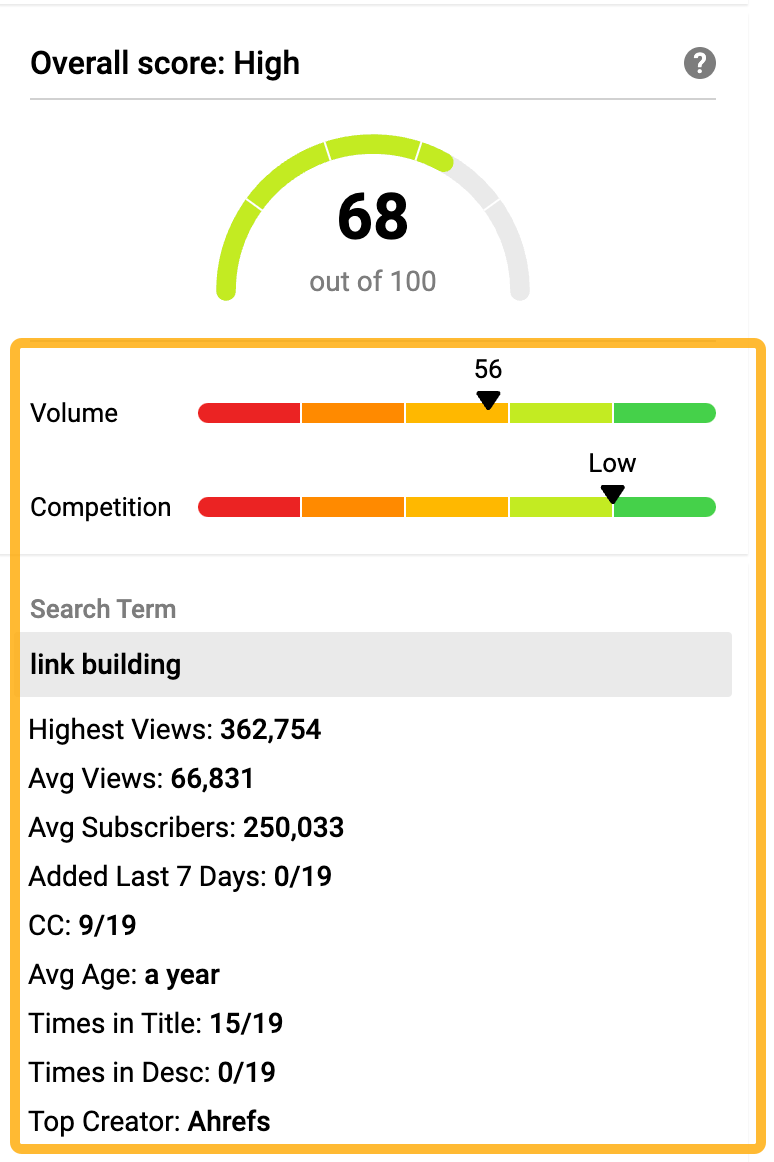
Then follow the steps in the video below to learn how to create videos that rank:
YouTube videos rank on Google too.
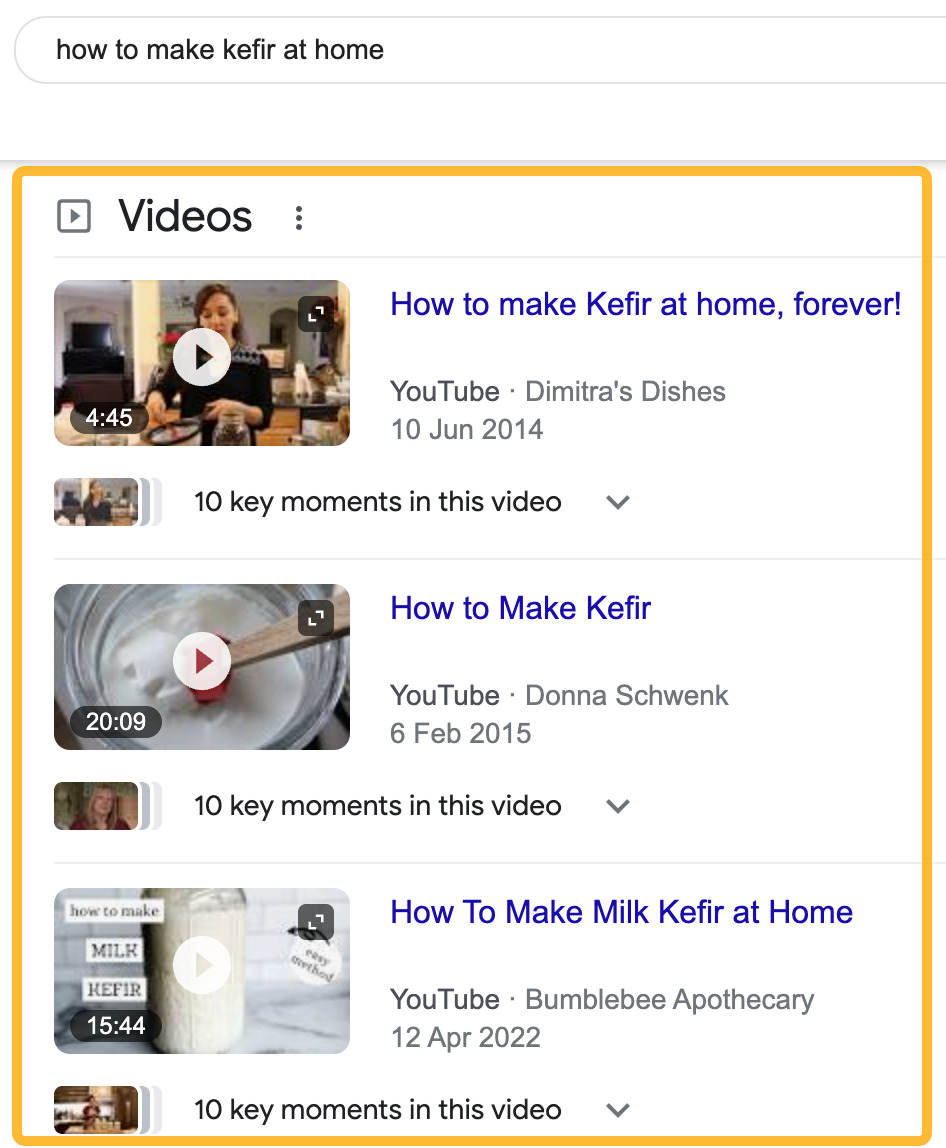
To rank your videos on Google, you need to find topics that people prefer to watch videos about. Here’s how to find them:
- Go to Ahrefs’ Content Explorer
- Run this search:
site:youtube.com inurl:watch title:topic - Sort the results by Page traffic

This will give you YouTube videos that currently get search traffic from Google. Look through the list to find relevant topics you can cover.
Follow our resource below to create a video that’ll rank for these topics:
If you have the budget and are willing to invest, don’t forget that you can always pay for traffic to your website.
But you don’t have to limit yourself to big (and therefore) expensive platforms like Google and Facebook. Run ads on other lesser-known ad platforms like Quora, TikTok, or Reddit.
For example, we ran Quora ads to promote our content:

Final thoughts
Experiment with the above traffic strategies and start generating traffic to your website.
Did I miss out on any cool tactics? Let me know on Twitter or Threads.




